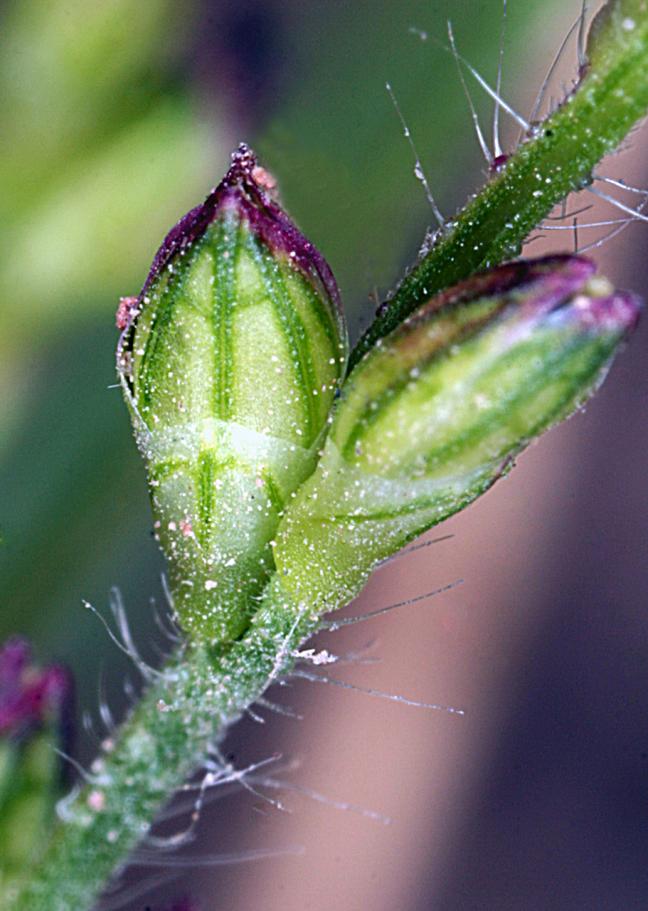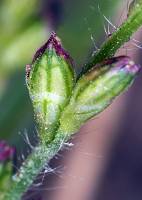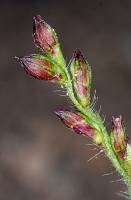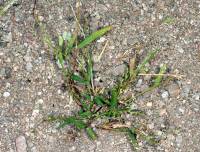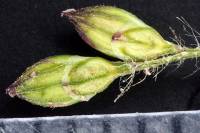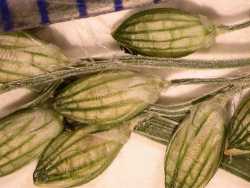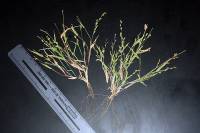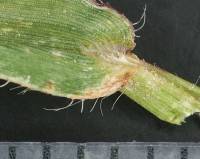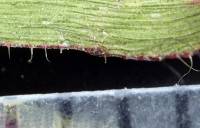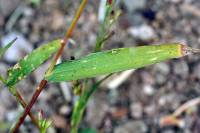Plants annual; tufted. Culms 15-120 cm, geniculate; nodes glabrous or shortly pilose. Sheaths glabrous or hispid, margins ciliate; ligules 1-1.5 mm; blades 3-33 cm long, 5-20 mm wide, glabrous or sparsely pilose on both surfaces, margins smooth or scabrous; collars pubescent. Panicles 5-15 cm long, 2-8 cm wide, simple, with 5-30 spikelike primary branches in more than 2 ranks; primary branches 2-10 cm, appressed to divergent, axils glabrous, axes 0.3-0.5 mm wide, triquetrous, scabrous or sparsely pilose; secondary branches usually present on the lower primary branches; pedicels scabrous and pubescent, shorter than the spikelets. Spikelets 2-3.4 mm long, 1.2-1.8 mm wide, obovoid, yellowish to reddish-brown or bronze-colored at maturity, mostly paired, in 2-4 rows, appressed to the branches. Glumes scarcely separate, rachilla internodes short, not pronounced; lower glumes 1-1.5 mm, at least 1/3 as long as the spikelets, glabrous, (1)3-5-veined; upper glumes (2)2.2-3.1 mm, glabrous, 7-9-veined, cross venation evident throughout; lower florets usually staminate, sometimes sterile; lower lemmas 2-3.1 mm, usually glabrous, 7-veined, cross venation evident throughout; lower paleas present; upper lemmas 1.8-2.9 mm long, 1.1-1.7 mm wide, apices acute to rounded, mucronate; anthers 1-1.6 mm. Caryopses 1-1.7 mm; hila punctiform. 2n = 18, 36.
Urochloa fusca grows from the southern United States to Peru, Paraguay, and Argentina, usually in moist, often disturbed areas at low elevations. It frequently occurs as a weed, but is occasionally grown for forage and grain.
Plants having smaller, more compact panicles and larger (2.4-3.4 mm), mostly yellowish spikelets have been called Urochloa fusca var. reticulata (Torr.) B.F. Hansen & Wunderlin. This variety is mainly found in the southwestern United States, but has been introduced into other areas, including Australia. Urochloa fusca (Sw.) B.F. Hansen & Wunderlin var. fusca usually has larger, more open panicles and smaller (2-2.5 mm), reddish-brown or bronze-colored spikelets. Much intergradation is reported between the two varieties. Further investigation is needed to establish that their recognition is warranted.
Common Name: browntop signalgrass
Duration: Annual
Nativity: Native
Lifeform: Graminoid
General: Annual, stems erect or decumbent and spreading below, 30-100 cm tall.
Vegetative: Sheaths glabrous to papillose-hispid; blades glabrous or thinly pubescent, 3-33 cm long and 5-20 mm broad, rarely if ever ciliate margins; ligule a tuft of stiff white hairs.
Inflorescence: Panicle 6-15 cm long, with appressed or erect-spreading, mostly simple branches; main panicle axis and branches scabrous or with scattered long, stiff hairs, short branchlets and pedicels usually hairy; spikelets 2.6-3 mm long, obovoid, yellowish-brown or golden-tinged at maturity; first glume thin, one-third to one-fourth as long as the spikelet; second glume and sterile lemma mostly reticulate with fine cross veins to well below middle, rounded at apex; fertile lemma rugose, nearly as long as the spikelet, the apex blunt, not short-beaked or cuspidate.
Ecology: Found on sandy washes, open rocky slopes, often as a weed in disturbed soils; flowers July-October.
Distribution: s AZ, s NM, TX and OK; south through the Greater Antilles, MEX to S. Amer..
Notes: The obovoid, semi-flattened, hard spikelets in an erect and spreading panicle, along with the more substantial, ciliate blades help to distinguish this species. Hard to tell from B. arizonica in the field. With a lens, look for the absence of enlarged bases of hairs on inflorescence branches. Previously treated within Urochloa.
Ethnobotany: Unknown
Etymology: Fusca means dark or brown.
Synonyms: Urochloa fusca
Editor: SBuckley 2010, FSCoburn 2015


